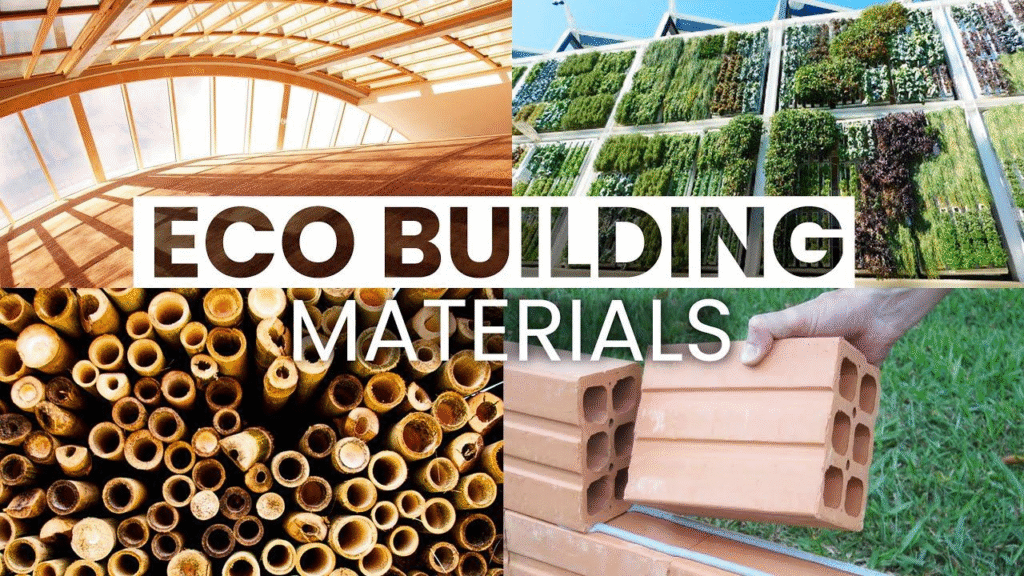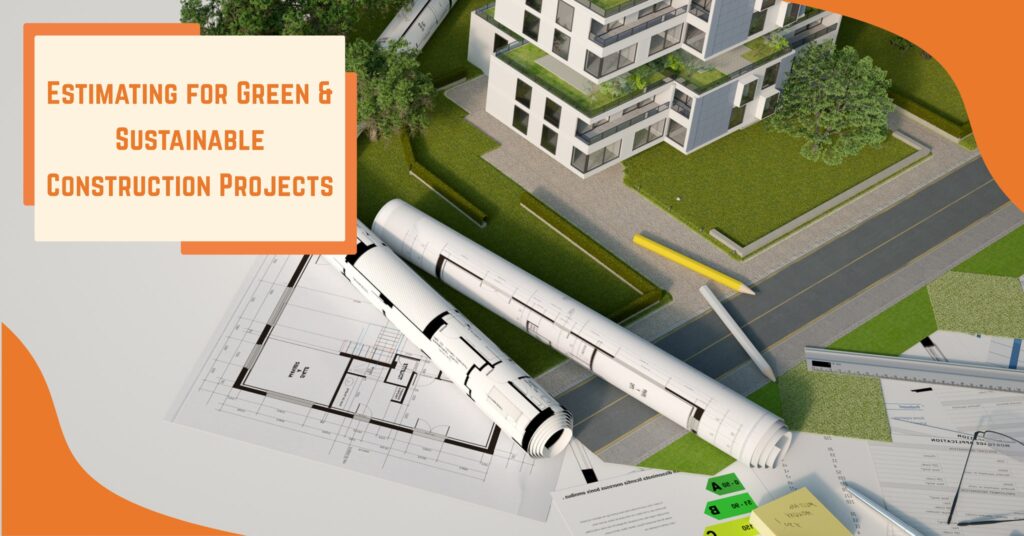In this tech era, construction must follow environmental regulations. At the same time, client demands for eco-conscious designs intensify. So, accurate estimating for green building projects is not just an option. It’s a necessity. Imagine facing unexpected cost overruns from unfamiliar sustainable materials or miscalculated energy-efficient systems, disturbing your timeline and budget. For contractors and project managers, these facts are too common, leading to low profits and missed opportunities in a market. These are expected to grow significantly by 2030. This guide highlights and explains effective strategies for green building estimating. It helps you to navigate these challenges to deliver projects that are both profitable and planet-friendly.
Green Building Estimating:
Green estimating is different from regular projects. It looks at long-term savings like lower energy bills, not just upfront costs. For instance, eco-friendly installations might be costly at first but can save up to 15-20% on utilities over time. This lets you plan better and win clients who care about the environment without spending money. It also tackles common worries, like changing material prices or meeting green rules. When you get estimates right, then you can win clients’ trust that you’re a pro at sustainable building. This leads to more winning projects.
Common Challenges in Estimating Sustainable Construction Costs:
Estimating costs for eco-friendly building projects can be tricky even for experts. One big issue is that prices for green materials often change a lot. This happens because of supply problems or if materials are hard to get in some areas.
Builders often forget how much extra recycled steel or special concrete costs, causing money problems. Another challenge is dealing with hard-to-handle parts like solar panels or wind systems that need special workers. Also, it is hard to measure benefits like better health for people or less pollution, which makes it tough to explain why clients should spend more.
Some other challenges are:
- Supply Chain Volatility: Green materials often cost 10-20% more at first due to limited suppliers. But careful buying and planning can help reduce these extra costs.
- Regulatory Hurdles: Getting green building certifications adds extra costs. Paperwork and verification can cost up to $150,000 for small-scale projects.
- Skill Gaps: Workers without experience in green builds may take a long time to finish work. This can increase labour costs by 15%.
Solving these problems early with good planning helps turn troubles into strengths, keeping projects on time and within budget.

Best Practices for Accurate Green Building Estimating:
To handle these challenges, use a clear plan that focuses on data-based choices. Begin by setting clear green goals at the start, and make sure they match what the client wants to stop the project from expanding. Use special tools and databases with green cost. These cost $500 to $2,000 yearly but help you get exact prices for eco-friendly parts.
Use lifecycle cost analysis (LCCA) to look at long-term value. This means counting costs for upkeep, energy, and disposal. For example, smart HVAC systems can be cost-effective and give savings on bills. Focus on big-impact ideas like modular building, which cuts waste and speeds up work.
- Collaborate Early: You must work with architects, engineers, and suppliers in integrated project delivery (IPD). This helps improve estimates by sharing knowledge early in the project.
- Leverage Technology: Use energy modelling software to predict how the building will perform. This reduces costly changes later on by catching problems early.
- Account for Incentives: Plan for tax credits and returns on green features. These can lower costs as much as 30%, making projects more affordable.
These strategies help contractors make better estimates. Usually within 5% of actual costs, which builds trust and more business. Many contractors also choose to outsource estimating services to expert firms to ensure accurate pricing for green systems without the overhead of in-house teams.
Using Eco-Friendly Materials in Estimates:
Eco-friendly materials are key to green projects, but their costs need careful planning. Recycled metal is strong and good for the environment, but prices can jump 10% above the market. Certified wood looks great and helps store carbon, often costing the same as regular wood if bought in bulk. Low VOC paints and recycled insulation improve air quality and add only 1-2% to costs.
To estimate well, measure exactly how much you need and check prices from different sellers. Tips for smart choices are:
- Choose Durable Materials: Pick items that last longer. This cuts replacement costs over time.
- Buy Locally: Get materials nearby to save on shipping. It also reduces pollution.
- Try New Products: Check out affordable plant-based materials. They’re getting cheaper as more are made.
Good estimating here controls costs and shows clients you care about green goals, making your bids stand out.

Estimating for LEED-Certified Projects:
LEED certification makes projects special but adds estimating work. Fees start at $600 and can hit $20,000 for big buildings. Features like water-saving systems or better windows might add 1-3% to costs, but they increase property value by up to 8%. Plan by choosing high-value LEED goals, like saving water, and track their costs separately. Budget for extra checks to meet LEED rules.
Steps to follow:
- Pick Smart Goals: Focus on LEED options like water savings. They pay off quickly.
- Track Costs Clearly: Use tools to separate LEED expenses. This keeps estimates clear.
- Plan for Reviews: Budget for outside checks. This avoids delays in certification.
These steps make LEED projects easier and more profitable, meeting client needs for green buildings.

New Trends in Green Estimating:
By 2025, new ideas will change estimating. Tracking carbon emissions will be key, adding new costs to plans. Smart tools using data can predict costs with 90% accuracy. Pre-made green parts will cut onsite work by 15%.
- Carbon Tracking: New rules will add emission costs. Plan for them in estimates.
- Smart Tools: Data-driven apps improve accuracy. They save time and money.
- Pre-Made Parts: Use factory-built green pieces. They speed up work and cut errors.
More projects will aim for zero energy use, and robots will handle materials to avoid mistakes. Using nature-inspired designs or smart tech will help your projects stand out.
Conclusion:
Accurate estimating for green and sustainable construction projects is your key to delivering eco-friendly builds that stay on budget and impress clients. By tackling challenges like material costs and LEED requirements with smart planning, you can turn potential headaches into opportunities for profit and growth. Real-world successes like Bosco Verticale and Torre Reforma show how precise estimates drive standout results. Don’t risk delays or overruns. Use these simple strategies to lead in the booming green market. Act now and contact ALM Estimating for a free consultation to transform your next project into a sustainable success. Start today to save money and build a greener future!

Turn challenges into wins! Act Now for Green Success. Reach out to expert ALM Estimating today for expert green estimating that fits your projects perfectly. Contact us today! Get a 30% discount on your first estimate.
FAQs:
Q1: Why do green buildings cost more to build?
Green buildings usually have higher upfront prices. Eco-friendly materials and special features like better insulation or solar setups aren’t cheap. For example, recycled steel or low-energy systems can add 10-15% to the bill right away. But here’s the good part. They save on energy bills later, sometimes paying for themselves in just a few years through lower utility costs and returns.
Q2: What are the biggest hurdles in getting LEED certification?
The main snags come from high startup costs for things like paperwork, checks, and green tweaks that add 1-5% to your total spend. Plus, not everyone knows the rules well, which can lead to extra time fixing things. To make it easier, start early with clear goals and team up with experts who know the LEED points system. It helps cut surprises and speeds up the process.
Q3: How can I keep my green project estimates from going wrong?
It’s easy to mess up when green materials change prices. Also, when your team needs extra training can push costs up by 10-20%. To stay safe, add a 15-20% cushion for surprises. Must compare prices from different suppliers, and double-check your numbers with the actual project plans. This keeps your budget on track while sticking to eco-friendly goals.
Q4: Is LEED enough to make a building truly green?
LEED is a solid start. It checks energy use, water savings, and materials, but it’s not the whole story. Some buildings rack up points with easy wins like bike racks, yet ignore big issues like where materials come from or long-term waste. For real sustainability, mix LEED with other checks, like local eco-rules, to cover health, carbon cuts, and lasting value.
Q5: What’s a simple way to cut costs on eco-materials?
Shop local for stuff like certified wood or recycled insulation to skip high shipping fees and support nearby spots. Bulk buys can drop prices to match regular materials, and look for tax breaks that cover up to 30% of green extras. Start small by swapping one or two items per project to test savings without big risks.
Q6: How do I figure long-term savings in green estimates?
Look at the full picture: upfront costs plus years of lower energy and repair bills. Tools like free online calculators can show how efficient lights or HVAC systems might save 20-30% yearly. Talk to past clients who’ve done it. They often say the payback hits in 3-7 years, making the project cheaper overall.
Q7: Are there downsides to using green practices?
Sure, materials might not be easy to find everywhere, leading to delays or extra transport costs. Skilled workers for new tech can be hard to hire at first, adding to labour bills. But planning, like training your team early, can turn these into small bumps, and the perks like healthier spaces and happier clients make it worth the effort.
Q8: Why aren’t more folks building green if it’s so smart?
Many hold back due to myths about sky-high costs or worry over untested materials causing headaches. Folks in charge sometimes skip it for quick wins, ignoring how green buildings rent faster and last longer. Spread the word with real numbers like 15% energy cuts and share success stories to get more on board.
